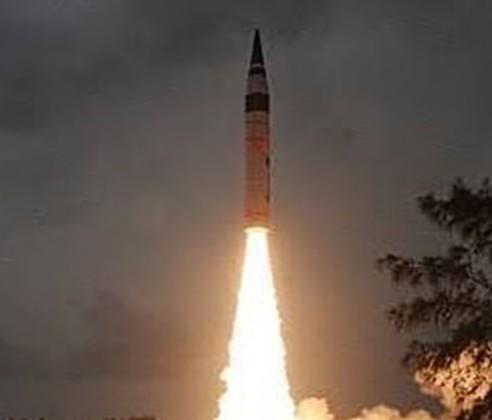
India Developing Agni-5 Missile That Can Carry 7,500-kg Bunker-Buster Warhead: Report
The recent strikes by the United States on Iranian nuclear sites has sent shockwaves across the globe, and it seems that India is taking note. In a move that is being seen as a response to the US strikes, India is reportedly developing its own ballistic missiles capable of carrying bunker-buster warheads. According to a recent report, the Defence Research and Development Organisation (DRDO) is working on a modified version of the Agni-5 intercontinental ballistic missile.
The new version of the Agni-5 missile will be a conventional weapon, designed to carry a massive 7,500-kg bunker-buster warhead. This significant upgrade will allow India to target heavily fortified bunkers and underground structures, a capability that has been lacking in its current arsenal.
The report, which was published by News18, suggests that the DRDO is working on the modified Agni-5 missile in response to the US strikes on Iranian nuclear sites. The US had used bunker-buster bombs, also known as penetrator weapons, to target Iranian nuclear facilities. These bombs are designed to penetrate deep into hardened targets, such as underground bunkers and facilities.
The development of the Agni-5 missile with a bunker-buster warhead is seen as a significant step forward for India’s military capabilities. The missile, which is currently under development, is expected to have a range of over 5,000 kilometers, making it capable of targeting distant regions. The addition of a bunker-buster warhead will allow India to target heavily fortified facilities, such as underground bunkers and command centers.
The Agni-5 missile is a significant upgrade over India’s current ballistic missile capabilities. The missile is designed to be more accurate and have a longer range than its predecessors. The addition of a bunker-buster warhead will make it a more versatile weapon, capable of targeting a wide range of targets.
The development of the Agni-5 missile with a bunker-buster warhead is also seen as a response to the growing threat posed by Pakistan’s nuclear capabilities. Pakistan has been steadily increasing its nuclear arsenal, and the development of the Agni-5 missile will provide India with a more effective means of defending itself against a potential nuclear attack.
The report also suggests that the DRDO is working on other modifications to the Agni-5 missile, including the addition of a maneuverable re-entry vehicle (MaRV). The MaRV will allow the missile to change course mid-flight, making it more difficult for opponents to intercept.
The development of the Agni-5 missile with a bunker-buster warhead is a significant step forward for India’s military capabilities, and it is expected to have significant implications for the country’s national security. The addition of this capability will provide India with a more effective means of defending itself against a range of threats, and it will also give it the ability to target heavily fortified facilities and command centers.
In conclusion, the development of the Agni-5 missile with a bunker-buster warhead is a significant step forward for India’s military capabilities. The missile is expected to have a range of over 5,000 kilometers, making it capable of targeting distant regions. The addition of a bunker-buster warhead will allow India to target heavily fortified facilities, such as underground bunkers and command centers. This significant upgrade will provide India with a more effective means of defending itself against a range of threats, and it will also give it the ability to target heavily fortified facilities and command centers.
Source:






